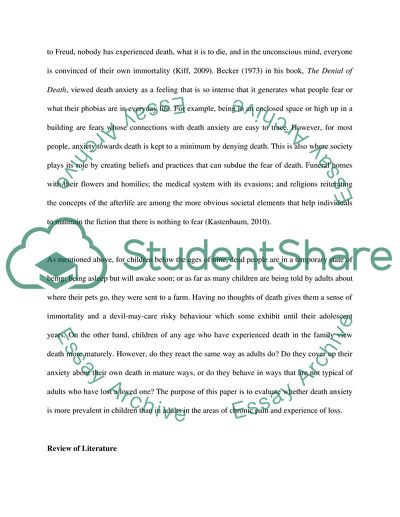Cite this document
(Is Death Anxiety More Prevalent in Children than in Adults Coursework, n.d.)
Is Death Anxiety More Prevalent in Children than in Adults Coursework. Retrieved from https://studentshare.org/psychology/1737440-critically-evaluate-the-notion-that-death-anxiety-is-more-prevalent-in-children-than-adult
Is Death Anxiety More Prevalent in Children than in Adults Coursework. Retrieved from https://studentshare.org/psychology/1737440-critically-evaluate-the-notion-that-death-anxiety-is-more-prevalent-in-children-than-adult
(Is Death Anxiety More Prevalent in Children Than in Adults Coursework)
Is Death Anxiety More Prevalent in Children Than in Adults Coursework. https://studentshare.org/psychology/1737440-critically-evaluate-the-notion-that-death-anxiety-is-more-prevalent-in-children-than-adult.
Is Death Anxiety More Prevalent in Children Than in Adults Coursework. https://studentshare.org/psychology/1737440-critically-evaluate-the-notion-that-death-anxiety-is-more-prevalent-in-children-than-adult.
“Is Death Anxiety More Prevalent in Children Than in Adults Coursework”, n.d. https://studentshare.org/psychology/1737440-critically-evaluate-the-notion-that-death-anxiety-is-more-prevalent-in-children-than-adult.


